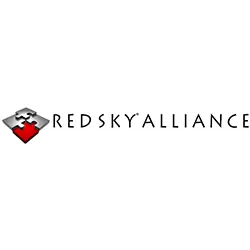Introduction: The Rising Danger of Shadow APIs

In the fast-evolving landscape of digital transformation, APIs (Application Programming Interfaces) are the unsung heroes enabling seamless connectivity between applications, cloud services, and devices. However, a new cybersecurity challenge, known as shadow APIs, is emerging as a modern iteration of shadow IT—unauthorized systems or tools operating outside IT oversight. Shadow APIs are undocumented or unmanaged APIs that lurk within an organization’s infrastructure, posing significant risks like data breaches, compliance violations, and system vulnerabilities. As businesses increasingly rely on APIs to drive innovation, the lack of visibility into these hidden endpoints threatens their security posture.
This article explores what shadow APIs are, why they’re considered the new face of shadow IT, their associated risks, and actionable strategies to mitigate them. Whether you’re an IT manager, a developer, or a business leader, this guide provides the insights you need to protect your organization from the dangers of shadow APIs.
What Are Shadow APIs?
.png?access_token=0d35f134-1068-4435-bec5-3a3a44a897df)
Shadow APIs are APIs that exist within an organization’s ecosystem but are not documented, monitored, or governed by the IT or security teams. Much like shadow IT—where employees use unauthorized software or devices—shadow APIs operate in the shadows, often created during rapid development cycles or third-party integrations without formal oversight.

Key Features of Shadow APIs
- Undocumented: No official records or developer documentation exist.
- Unmanaged: Not integrated into API gateways or security protocols.
- Unauthorized: Deployed without IT or security team approval.
- Hidden: Invisible to traditional monitoring tools, increasing vulnerability.
A 2023 Salt Security report revealed that 94% of organizations identified shadow APIs during audits, with an average of 14 undocumented APIs per enterprise. These hidden endpoints often connect to sensitive systems, making them a prime target for cybercriminals.
Why Are Shadow APIs the New Form of Shadow IT?
.png?access_token=529170cb-e8e8-4d74-9299-412cdbcf7a36)
Shadow APIs share the same characteristics as shadow IT: they’re deployed without oversight, bypass governance, and introduce risks. However, shadow APIs are particularly dangerous because they directly handle data flows, often serving as gateways to critical systems. Below, we outline why shadow APIs are the modern evolution of shadow IT.
Similarities to Shadow IT
- Lack of Visibility: Both shadow APIs and shadow IT operate outside the IT team’s radar.
- Bypass Governance: Neither adheres to organizational security or compliance policies.
- Risk Amplification: Both expand the attack surface, inviting exploitation.
Differences from Traditional Shadow IT
- Data-Centric Risks: Unlike shadow IT (e.g., unauthorized apps), shadow APIs directly expose sensitive data.
- Developer-Driven: Shadow APIs often stem from coding practices rather than end-user behavior.
- Harder to Detect: APIs require specialized tools for discovery, unlike visible software or devices.
According to Gartner, by 2025, APIs will be the primary attack vector for web application breaches, with shadow APIs playing a significant role. Their stealthy nature makes them a critical concern for modern cybersecurity.
The Risks of Shadow APIs
.png?access_token=64e96521-1b2f-402a-9faa-029c3b84b500)
Shadow APIs create vulnerabilities that can cripple an organization’s security and operations. Below are the top risks associated with these hidden endpoints.
1. Data Breaches and Exposure
Shadow APIs often lack encryption or proper authentication, making them easy targets for attackers. For instance, an undocumented API handling customer data could leak personally identifiable information (PII). A 2024 IBM Security report estimated that the average cost of a data breach involving APIs was $4.8 million.
2. Unauthorized Access
Unmonitored APIs may use weak or outdated authentication methods, allowing attackers to access internal systems. This risk is heightened when shadow APIs connect to third-party services or legacy databases.
3. Compliance Violations
Regulations like GDPR, CCPA, and PCI-DSS mandate strict oversight of data-handling processes. Shadow APIs bypass these controls, risking non-compliance and fines. A 2023 Forrester study found that 70% of organizations with shadow APIs faced compliance challenges.
4. Expanded Attack Surface
Each undocumented API increases an organization’s attack surface. Attackers can use tools like API reconnaissance to discover these endpoints, exploiting them for privilege escalation or denial-of-service (DoS) attacks.
5. Operational Challenges
Shadow APIs can lead to redundant development, inconsistent data flows, and integration issues. Without centralized oversight, developers may create duplicate APIs, increasing technical debt and operational inefficiencies.
How Do Shadow APIs Emerge?
.png?access_token=0a1b6950-de01-4ebe-8781-1b3554cf61f7)
Shadow APIs arise from various organizational and technical factors. Understanding their origins is key to preventing their proliferation.
- Agile Development Practices: In fast-paced DevOps environments, developers may create APIs without documentation to meet deadlines.
- Third-Party Integrations: Vendors or partners may deploy APIs that connect to your systems without notifying IT teams.
- Legacy Systems: Older systems may include undocumented APIs that are overlooked during upgrades.
- Decentralized Teams: Siloed teams in large organizations may deploy APIs independently, bypassing governance.
- Mergers and Acquisitions: Acquired companies may introduce undocumented APIs into the parent organization’s ecosystem.
What Can You Do About Shadow APIs?

Mitigating shadow API risks requires a proactive, multi-faceted approach. Here are actionable strategies to gain visibility and control over these hidden endpoints:
1. Deploy Continuous API Discovery
Modern Attack Surface Management (ASM) tools, like TRaViS ASM, continuously scan your infrastructure—analyzing network traffic, code repositories, and runtime environments—to automatically identify known, unknown, and undocumented APIs.
- Actionable Step: Implement continuous or frequent (e.g., monthly) automated API discovery scans to detect new or hidden endpoints as they emerge.
2. Establish Centralized API Governance
A robust API governance framework brings order to potential chaos. It ensures APIs are consistently documented, approved, and monitored according to defined standards.
- Best Practices: Maintain a comprehensive API inventory for complete visibility. Use standards like the OpenAPI Specification for clear, consistent documentation. Leverage API gateways to enforce security policies, manage traffic, and control access centrally.
3. Enhance Authentication and Authorization
Weak authentication is a primary target for attackers (ranked as a top risk by OWASP). Secure your APIs using strong, standard protocols like OAuth 2.0 and implement Role-Based Access Control (RBAC) to ensure users and applications only access what they need (principle of least privilege).
- Actionable Step: Regularly audit all APIs, especially older ones, for weak or missing authentication/authorization and upgrade them to current industry standards.
4. Monitor API Traffic in Real-Time
You can't protect what you can't see. Continuous, real-time monitoring of API traffic is essential for detecting anomalies like unauthorized access attempts, unusual data patterns, or volumetric attacks. Tools like TRaViS ASM provide this visibility.
- Actionable Step: Configure automated alerts for suspicious API activity, such as high request volumes, access from unexpected IP addresses or geolocations, or excessive error rates.
5. Train Developers on Secure Practices
Empower your development teams by educating them on secure API development lifecycle practices and the specific risks posed by shadow APIs. Secure coding isn't an afterthought; it's a core requirement.
- Actionable Step: Host regular workshops covering essential API security topics like input validation, output encoding, rate limiting, encryption, and proper error handling. Industry reports show most organizations (around 85%) provide some formal API security training.
6. Conduct Regular Security Audits & Testing
Automated tools are essential, but periodic, in-depth security assessments can uncover vulnerabilities that other methods might miss. This includes business logic flaws or complex authorization issues.
- Actionable Step: Engage cybersecurity experts for regular penetration testing and specialized API security assessments to validate your defenses against real-world attack techniques.
By implementing these strategies, supported by powerful ASM tools like TRaViS ASM, you can effectively reduce the risks associated with shadow APIs and strengthen your overall security posture.
What Are the Best Practices for Preventing Shadow APIs?
.jpeg?access_token=588dea3f-0ca6-4659-ad44-5c520e0c188c)
The best approach to preventing shadow APIs combines proactive discovery, strong governance, and ongoing education. By identifying undocumented APIs early, enforcing security policies, and training teams, organizations can minimize risks and protect sensitive data.
Multi-Factor Authentication for API Security
Implement multi-factor authentication (MFA) for developers and users accessing API endpoints. MFA requires multiple verification steps (e.g., password and a one-time code), reducing the risk of unauthorized access.
- Why It Works: MFA mitigates credential theft, a common exploit for shadow APIs.
- Actionable Step: Integrate MFA using tools like Auth0 or Okta.
Common Questions About Shadow APIs
.jpeg?access_token=b3324206-1dd5-42e3-a46d-5041bd0073f6)
What Are Shadow APIs in Simple Terms?
Shadow APIs are undocumented or unmanaged APIs operating within an organization’s systems, invisible to IT and security teams. They pose risks like data leaks and compliance issues.
How Can Small Businesses Tackle Shadow APIs?
Small businesses can:
- Use cost-effective tools like Postman for API discovery.
- Document APIs in a centralized repository.
- Train developers on secure coding.
- Hire managed security providers for audits.
Are Shadow APIs Always Intentional?
No, shadow APIs are often unintentional, resulting from oversight, rushed development, or third-party integrations. However, their lack of oversight makes them vulnerable.
Visualizing Shadow API Risks and Solutions
| Risk | Impact | Solution |
|---|---|---|
| Data Breaches | Loss of PII, financial damage | Use encryption, OAuth 2.0 |
| Unauthorized Access | System compromise | Implement MFA, RBAC |
| Compliance Issues | Fines, legal penalties | Centralize API governance |
| Expanded Attack Surface | Increased breach risk | Regular API discovery |
Take Control of Shadow APIs Today

Shadow APIs, the new form of shadow IT, pose a significant threat to organizations by exposing sensitive data, undermining compliance, and increasing cyber risks. By understanding their origins, recognizing their dangers, and implementing proactive solutions like API discovery, governance, and developer training, businesses can secure their digital ecosystems. Stay vigilant by regularly updating your API security practices to keep pace with evolving threats.
For more cybersecurity insights, explore our related articles or subscribe to our newsletter for the latest updates. Take action now to eliminate shadow APIs and build a safer, more resilient organization.
Sources:
-
IBM Security X-Force Threat Intelligence Index 2024
Insight into the cost of API-related data breaches. -
Gartner – API Security Predictions for 2025
Forecast: APIs to become the #1 attack vector for web apps. -
Forrester Research – The State of API Security, 2023
Found that 70% of organizations with shadow APIs faced compliance challenges.
https://www.forrester.com -
CSO Online – Shadow IT and API Risk Coverage
Highlights the dangers of undocumented APIs and lack of governance.
https://www.csoonline.com -
NIST (National Institute of Standards and Technology) – API Security Frameworks
Government-backed guidelines on API management and secure development.
https://csrc.nist.gov -
Salt Security – State of API Security Report 2023
Non-platform educational content, includes key stats about API visibility. -
OWASP – API Security Top 10
Authoritative industry list of the most common API vulnerabilities.
https://owasp.org/www-project-api-security -
CSO Magazine – Security Surveys and Executive API Insight
Industry findings about API risk reduction strategies.
https://www.csoonline.com -
Cybersecurity & Infrastructure Security Agency (CISA)
Federal guidance on software supply chain and interface-level risks.
https://www.cisa.gov











